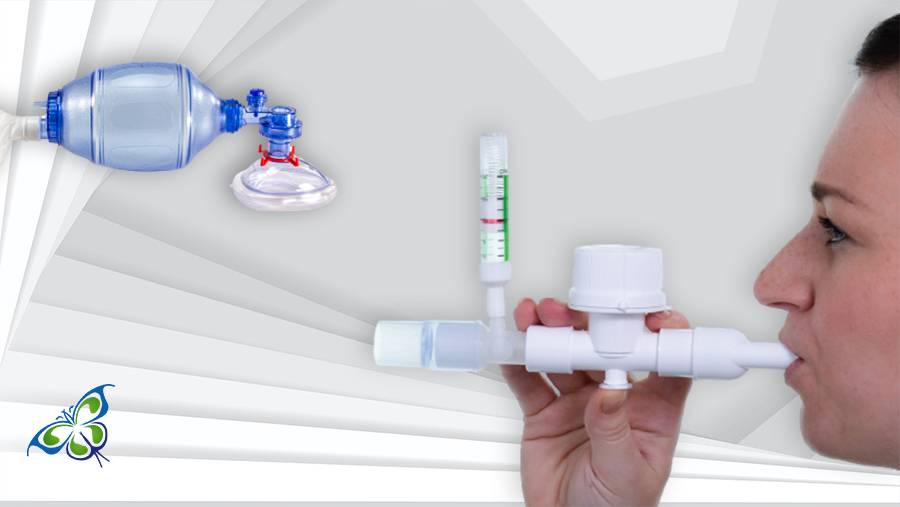
Hello
Select Address

Peep valve is a necessary device in all critical units for respiratory management and supplemental oxygenation. PEEP is the abbreviation for Positive End Expiratory Pressure. This method of ventilation maintains a patient’s airway pressure above the atmospheric level at the exhalation end. This is attained by means of mechanical impedance within the breathing circuit, usually a valve.
How do PEEP valves work?
In the case of normal lung conditions, during expiration, the pressure in the lungs is maintained by the glottis. The interplay between elastic recoils of the lung and chest wall is balanced when the volume is lowest. The alveoli remain inflated because of this pressure.
In cases of airway diseases, the lungs are unable to maintain a static pressure giving way to atelectasis. The alveoli collapse and get deliberately harder to take part in inflation.
The purpose of the peep therapy is to increase the static volume of gas remaining in the lungs, thereby decreasing alveolar rupture. It also improves the gaseous exchange in blood.
Patients with pulmonary edema and acute respiratory syndrome require the use of PEEP valves in their ventilation, for better oxygenation and re-recruitment of lung tissues.
Peep valve are of two types –
• Unidirectional valves that allow gas to flow through them in one direction.
• Bidirectional valves that allow the passage of gases in both directions.
Peep valve placement consideration:
These valves are designed for peep therapy when properly placed in the breathing circuit.
Incorrect placement of unidirectional peep valve against the gaseous flow can leave the patient unventilated. This may increase pressure and cause barotrauma.
Incorrect placement of a bidirectional peep valve will keep the patient ventilated but would not generate PEEP. If undetected, this can be fatal.
Presently available peep valves are easy to work with. However, these look like an inspiratory connector and tend to confuse users.
Who should use Peep valve ventilation?
In artificial respiration, among all age groups, peep valves help in reassigning alveoli and prevent alveolar damage. Patients with the following medical history can benefit from PEEP:
• Lung contusion caused by trauma.
• Emphysema and chronic bronchitis leading to Chronic Obstructive Pulmonary Disease (COPD)
• Atelectasis
• Hypoxia
• Cardiac Arrest
• Pneumothorax
[Read more on: island dressing wound]
Functions of Peep Valve:
1. Peep valves improve oxygenation
In the case of lung failure, the alveoli collapse and impact blood oxygenation. To prevent this, PEEP valves come into play. The little amount of pressure preserved in the lungs maintains the alveoli in inflated form. In medical terms, this method increases Functional Residual Capacity (FRC).
A peep valve is a spring-loaded and color-coded object applied to the expiratory port of the ventilation device. When the patient exhales against it thereby maintaining a constant pressure ratio.
2. Peep valve ventilators prevent lung injury
With prevalent disorders in the lungs, a smaller number of tissues takes an active part in gaseous exchange. Some remain collapsed even in the next inhalation. This is termed as recruitment – de-recruitment of the lung. Repetitive collapsing and expansion in each breath can give way to the development of ARDS. Acute respiratory distress syndrome (ARDS) causes extensive inflammation in the lungs and is counted as respiratory failure.
Peep valve ventilators provide effective measures to combat such occurrences. The use of this valve ventilation prevents the lungs from swelling up and exposure to continuous damage.
To Summarize:
Effective use of peep valve in ventilation therapy –
• Reduces alveolar damage.
• Improves overall oxygenation by re-recruiting inactive alveoli.
• Improves Functional Residual Capacity.
• It can be used to administer nebulized medication.
With the use of PEEP valve ventilation, less amount of pressure is required to get the volume of air in the lungs. After the initial pressure, the alveoli are partially inflated, making the process easier from the second breath.
It is highly recommended to consult a doctor before involving the use of PEEP valves.